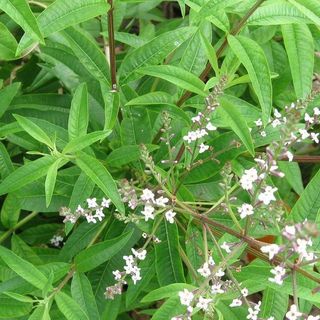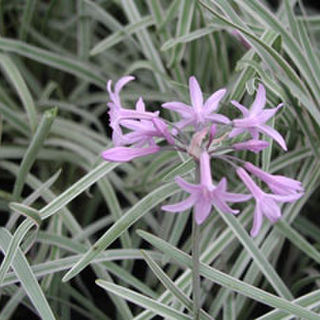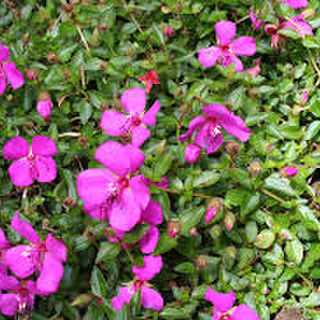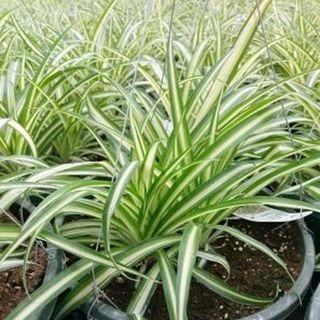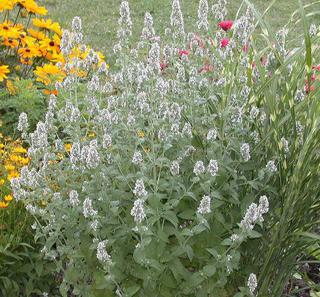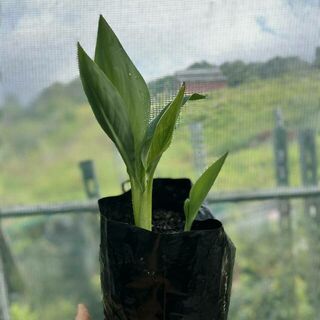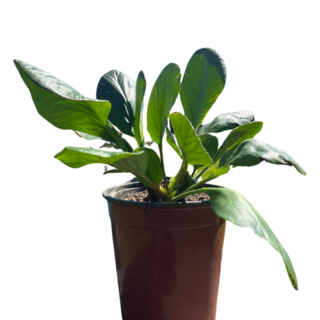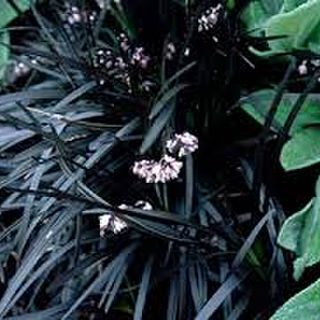A fungal disease of apples, outside of New Zealand Black Spot is called Apple Scab. As well as Apple Black Spot, there is also a different fungus called Pear Black Spot and another Spot that afflicts roses.
In New Zealand, black spot is an issue for apple growers of all regions as it is a wet weather disease. In general the higher the temperature and the longer it rains, the more severe the infection can be and the period time. Severe black spot on the leaves of young trees can also retard its growth
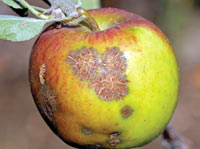
In the spring the initial infection shows up as dark green velvety patches on the leaves and developing fruit. Later the lesions o the leaves become black and slightly raised. By harvest time in the late summer early autumn, fruit spots are brown and cracked with a black halo .
Fungicides should be applied as preventatives NOT Cures The black spot spores overwinter in fallen leaves therefore removal of dead leaves is essential in the prevention of the disease being carried over to the next year Make sure to remove all fruit from the trees after harvest to again reduce risk of carry over infection
At the end of the day prevention is better than cure as always
Yates Fungus Fighter
Controls Powdery Mildew BLACKSPOT Rust on apples Grapes Ornamentals and lawns
It has a systemic action and works within the plant and comes in 200ml bottles
Yates Greenguard Fungicide
Controls Powdery & downy mildew, clubroot BLACKSPOT botrytis rust flower blight Sclerotinia trot Certain leaf spot, fungi grey mould late blight brown rot dollar spot brown patch and red thread
It is a Systemic action and works within the plant
It has a 14 day holding period for all fruit and vegetable
It comes in a 200ml bottle
Citrus Blast
Citrus blast affects grapefruit and oranges Infections usually follows physical damage and spreads from there The leaf stalks blacken and the infection spreads to the base of the leaf The diseased leaves fall leaving small red-brown scabs called cankers Deep circular dark brown or black pits form on the fruit and some of these pits will join together to form extensive depressions.
Some measure of control can be obtained by providing shelter for the tree to reduce wind damage Cooper sprays applied after blossom fall in autumn will also provide control Prune out the burn and infected shoots For older trees it will be more difficult to get rid of the infection Replanting of young trees in a different area may be needed.
Yates Copper Oxychloride
A fungicide that controls a wide range of fungal and bacterial diseases on fruit, vegetables and ornamentals protecting the plant.
Broad spectrum copper spray that controls a wide range of fungal and bacterial diseases.
Citrus Verrucosis or Lemon Scab
Also called lemon scab, this fungal disease causes raised roughened warty lesions to form on the outside of the fruit. Rough patches also appear on the stems and leaves, and fruit drop often occurs. Although the inside of the fruit is unaffected, the disease should be controlled because it gradually reduces the vigour of the tree. Damp, cool weather encourages the disease.
Remove affected fruit, twigs and leaves. Dispose of them in the garbage. Copper spray should be applied before, after and during flowering to prevent further infection. You can also spray at petal fall in late spring then in made summer and again in late autumn An additional spray may be needed in mid spring and early winter in the disease is severe Copper based sprays are most effective control to stop new lesions forming on an infected tree
Yates Liquid Copper
Is a copper based fungicide/bactericide solution for the control of various diseases of fruit, vegetables and ornamentals. Its unique formulation provides advantages over conventional copper fungicides.
Crown Gall
Crown gall causes rough woody tumour like galls to form on roots, trunks and occasionally branches of many different trees and shrubs. Galls can interrupt the flow of nutrients and water within the tree, reducing overall plant growth/Vigour. 
Young plants with many galls and plants with a gall completely encircling the main stem are the most severely affected and can be killed by the disease. Mature trees often tolerate many galls with few negative effects. Plants with crown gall are more susceptible to drought stress, winter injury and secondary diseases that enter the plant through cracks in the gall.
The limbs become unproductive Leaves can be small and fall off easy The best preventative control is to keep tools and equipment sterilised and clean after pruning and badly infected trees should be removed
Downy Mildew
Downy mildew are an issue for roses, grapes and some berry fruit. It appears in warm wet conditions with little air movement. Round mouldy-looking blotches appear on the top and bottom of the leaves These spots enlarge or merge to cover most of the leaf, particularly on young succulent growth. In hot weather the spots dry out and become brown to a reddish-brown in colour. Later, during warm and humid conditions, further development of the fungus may occur around these outer edges of the spots.
Leaf plucking to increase air movement is key to prevention and control.
Reducing soil and foliage wetness in waterlogged gardens also helps to reduce the disease development. Protect by routine applications of fungicides or, preferably, spray when the first signs of infection and disease appear
Yates Greenguard Fungicide
Controls Powdery & downy mildew, clubroot BLACKSPOT botrytis rust flower blight Sclerotinia trot Certain leaf spot, fungi grey mould late blight brown rot dollar spot brown patch and red thread
It is a Systemic action and works within the plant
It has a 14 day holding period for all fruit and vegetable
It comes in a 200ml bottle
Fire Blight
This disease is caused by a bacterium that infects pears apples and quinces as well ass other ornamentals plants of the Rose family When the flowers bloom in spring, warm temperatures and excess soil moisture can bring this disease on.

The flowers are usually the first to be infected and will eventually wilt shrivel and turn black Other symptoms of this bacterial infection are blackening of leaves shoots and even branches in severe cases Fire blight can survive over winter in the cankers becoming active again in spring
Loss of flowers can be caused by a severe outbreak meaning no fruit is produced An outbreak such as that can also cause die-back on trees and can spread infection to other fruit trees Young trees are far more vulnerable to infections because of the young tender growth Severe cases of fire blight in mature trees are rare
The main form of chemical control is Copper spray which must be applied prior to spring growth It also pays to avoid over fertilising and thereby causing excess sappy growth particularly on young trees Prevent spreading the disease by sterilising pruning equipment after use
Yates Copper Oxychloride
Yates Liquid Copper Fungicide is a copper based fungicide/bactericide solution for the control of various A fungicide that controls a wide range of fungal and bacterial diseases on fruit, vegetables and ornamentals protecting the plant.
Broad spectrum copper spray that controls a wide range of fungal and bacterial diseases.
Grey Mould
Grey mould can attach a number of fruit and vegetables The fungus does not readily infect healthy tissue, but easily inhabits damaged or dying plant tissue or fruit removed from the plant.
Moisture and warmth are needed for the spore to germinate, infection growth and development of this fungus.

The disease becomes more rampant when either air movement or sunlight is restricted within the plant. Dying parts of the flowers , green leaves with dead brown tissue , deal leaves, occasionally pruning's and fallen fruit will carry and harbour the disease.
This fungus causes several kinds of rot most of which can develop after harvest When fruit becomes over-mature, grey mould is one of several fungi that causes breakdown rotting. A single fruit infected by this disease can also accelerate premature decay of the remaining fruit in the same container
In the home garden fungicides can be applied to prevent the disease and when out breaks occur it is best to completely remove the plant and any debris and burn DON”T plant any fruit in its place foe a couple of years
Yates Bravo Fungicide
A highly effective protectant fungicide. It controls a wide range of fungal diseases on fruit, vegetables and ornamentals. Bravo is stable in sunlight and its spray deposits are redistributed during rain, giving effective control over a long period of time
Mix 3ml Bravo in 1 litre of water (15ml per 5 litres). Spray plants thoroughly. Good coverage is essential. Apply at 10-14 day intervals in wet, humid weather when disease is prevalent. For botrytis (grey mould) control, apply at 7-10 day intervals. spray at the first sign of disease to prevent its spread.
Precautions
Wihtholding periods: Strawberries, stonefruit, cucurbits: 1 day. Grapes: 28 days. All other crops: 7 days.
Leaf Curl
Commonly found in peaches and nectarines The characteristic symptoms of distorted leaves usually appear in lush spring growth Leaves will often bend backwards and appear thicker and softer than usual. Affected fruit display reddish hue and twigs and fruiting spurs can also shrivel and die.

The fungus thrives in high humidity, which can bring it on at leaf development in spring If the tree is infected for continual years the plant die. This is a crippling disease that is very hard to control. Common in cool wet springs as well.
Copper sprays are the most commonly used to treat leaf curl in fruit trees. Apply the first spray after pruning the second one at budburst and a third a couple of weeks later Good fertilisation and drainage will help to prevent the problem. Try to avoid watering the leaves of the plant to increase moisture hanging around
Yates Liquid Copper Fungicide
Yates Liquid Copper Fungicide is a copper based fungicide/bactericide solution for the control of various diseases of fruit, vegetables and ornamentals. Its unique formulation provides advantages over conventional copper fungicides.
Broad-spectrum fungicide and bactericide with Advanced Aquagel* Technology
Use on Fruit, Vegetables and Ornamentals It is easy to use and 100% water soluble – forming an aquagel with its own built-in spreading and sticking ability.
Yates Liquid Copper Fungicide is to be used as a preventative spray and generally should be applied before or at the first sign of disease. Many diseases infect plants before symptoms occur, so applications should preferably begin before symptoms appear.
Leaf Spot
Leaf spot attacks young fruit especially in the wet and humid conditions The disease spreads by spores produced on infected leaves both on the tree and on the those that have fallen to the ground.

The infection becomes visible as leaves, twigs and fruit start to produce small brown to black spots surrounded by a yellow halo The spots enlarge as the leaves mature and some leaves may drop, or the entire shoot may die.
In the home garden spraying with a copper-based fungicide such as copper oxychloride is the most practical means of controlling the disease The number of fungicide applications needed varies greatly with the susceptibility of the variety and the severity of the infestation Any infected material is best burnt rather than composted
Yates Liquid Copper Fungicide
Yates Liquid Copper Fungicide is a copper based fungicide/bactericide solution for the control of various diseases of fruit, vegetables and ornamentals. Its unique formulation provides advantages over conventional copper fungicides.
Broad-spectrum fungicide and bactericide with Advanced Aquagel* Technology
Use on Fruit, Vegetables and Ornamentals It is easy to use and 100% water soluble – forming an aquagel with its own built-in spreading and sticking ability.
Yates Liquid Copper Fungicide is to be used as a preventative spray and generally should be applied before or at the first sign of disease. Many diseases infect plants before symptoms occur, so applications should preferably begin before symptoms appear.
Root Rot
Also known as Phytophtora root rot is caused by the soil fungus and grows through the root system (and sometimes the stem) of a plant, destroying it and preventing the plant from absorbing water and nutrients it is hard to notice this disease until it is too late and the infection takes hold before the upper leaves and stems start to die off.

Good drainage is the best way to prevent root rot. However if the fungus is established in the garden it must be tackled using a system of quarantine and hygiene and treatment with chemicals such as phosphites to boost the plants nutrients. Keep a look out for wilting plants as this is the first symptom of the disease Infected plants should be removed and burnt Don’t plant anything in the bare ground until the ground has been sufficiently cleansed of disease
The infection appears on the roots and truck to begin with the foliage turns yellow while the truck oozes gum at the base Some leaves rapidly turn brown and curl up but remaining attached to the branch for some time while others will drop off in a few days
Yates Anti Rot
Controls collar rot, phytophthora root rot in citrus, avocados and ornamentals. Also controls downy mildew in grapes.
·Systemic fungicide – absorbed by the foliage and travels down to the roots.
·Low toxic
·No withholding period.
·Boosts the plant’s own defence mechanisms to help prevent disease.
·Used by commercial growers & Australian Plant enthusiasts.
·Child resistant cap.
Easy-to-use measure bottle. How It Works.
Absorbed by the leaves and travels down to the roots. Boosts the plants self defence mechanisms, giving it the ability to prevent disease taking hold, as well as helping to cure disease that already exists. Anti Rot works best as a preventative spray.
Silverleaf
Silverleaf is a fungal disease that attacks a wide range of fruiting trees and shrubs. It is particularly a problem in peaches, nectarines, plums and almond. Silverleaf is found in temperate climates worldwide It can affect trees throughout New Zealand but it is more of a problem in the damp humid regions.

The silverleaf fungus enters the tree through open wounds The spores form on dead wood of the tree and continually divide to produce more and more fungus spores. The characteristic symptom of silverleaf is a silvery scheen on the foliage. In fruit trees usually one branch will start to show symptoms As the fungus spreads further branches become infected eventually killing the host Sucking insects such as mites and thrips can also cause a similar silvering effect on trees
Stone fruit become progressively more silvered and eventually die.
The prefect conditions for silverleaf spore release and infection are drizzly rainy foggy or humid days without wind or sun. The risk of infection is higher at night because overnight dew gives the spores more moisture.
Best control is to ensure that wounds are protected against infection All pruning should be done during hot dry summer weather when the disease is less active Watch out for shelter belts and hedges because they can be host to the disease too if tree dies from the disease remove and burn it and all debris
Yates Liquid Copper Fungicide
Yates Liquid Copper Fungicide is a copper based fungicide/bactericide solution for the control of various diseases of fruit, vegetables and ornamentals. Its unique formulation provides advantages over conventional copper fungicides.
Yates Liquid Copper Fungicide is to be used as a preventative spray and generally should be applied before or at the first sign of disease. Many diseases infect plants before symptoms occur, so applications should preferably begin before symptoms appear.
Yates Bacseal Super Pruning Paint
An effective, long lasting wound dressing for fruit trees and ornamentals, including roses. Suitable for use on pip and stone fruit trees and ornamentals (including roses).
Sooty Mould
Sooty moulds are a collection of fungi that grow on the secretions by scale insects, aphids, or mealy bugs that pierce the bark to suck up the sap of the tree or shrub. Later much of the sugary sap is excreted by the insect and forms a sticky film over the plant’s surfaces The sooty mould fungi live in this plant sap The fungi itself does not harm the plant cells or tissues but it is a sign that insects have invaded the bark of the plant The mould can block sunlight from the leaves stunting any potential growth and cause dark sinister look to the leaves.

Trees are severely infected by this fungus look as if they have had ashes dumped on them It is common in citrus fruit especially larger untended grapefruits.
To treat the problem first trim back the plant as required and them remove the bugs by an application of Yates Conqueror Spraying Oil
An intermediate spraying oil for control of scale, mites and mealy bug on fruit trees, grapes and ornamentals.
It works by contact action, coating pests and their eggs with a suffocating film. Because control is by physical means, pests are unable to develop resistance
Stone Fruit Blast
This bacterial disease is prevalent in New Zealand on Apricots, cherries, nectarines and peaches Stone fruit blast will affect the overall plant health and most importantly the size and quality of fruit.

Affected trees can show the symptoms of blast with large ‘cankers’ which are scars on tree trucks or limbs Any dying material should be cut out immediately and burnt
The disease can be routinely prevented with coppers sprays It is usually best to begin these at leaf fall in autumn to protect fresh leaf scars then spray fortnightly until early spring
Yates Liquid Copper Fungicide
Yates Liquid Copper Fungicide is a copper based fungicide/bactericide solution for the control of various diseases of fruit, vegetables and ornamentals. Its unique formulation provides advantages over conventional copper fungicides.
Broad-spectrum fungicide and bactericide with Advanced Aquagel* Technology
Use on Fruit, Vegetables and Ornamentals It is easy to use and 100% water soluble – forming an aquagel with its own built-in spreading and sticking ability.
Yates Liquid Copper Fungicide is to be used as a preventative spray and generally should be applied before or at the first sign of disease. Many diseases infect plants before symptoms occur, so applications should preferably begin before symptoms appear.
